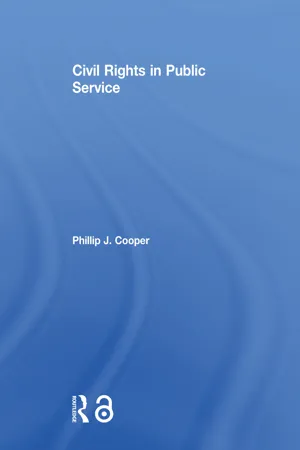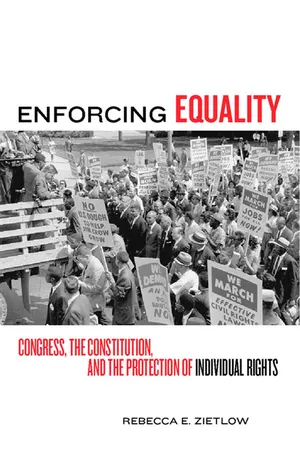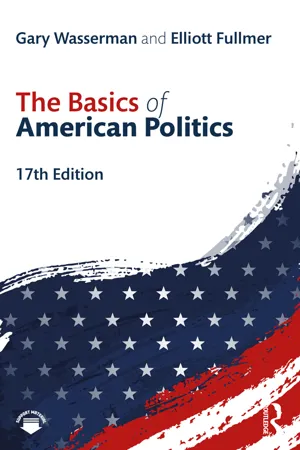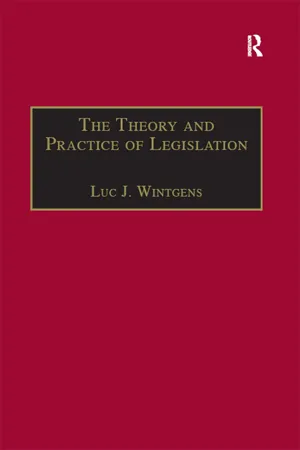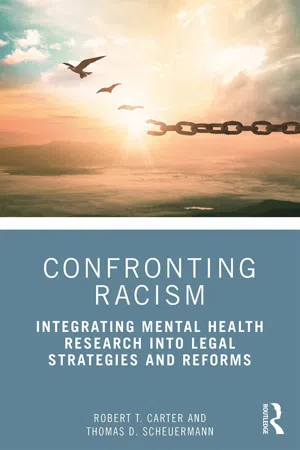History
Civil Rights Legislations
Civil Rights Legislations refer to laws enacted to protect the rights of individuals from discrimination based on race, gender, religion, or other characteristics. These laws aim to ensure equal treatment and opportunities for all members of society. Key examples include the Civil Rights Act of 1964 and the Voting Rights Act of 1965, which were pivotal in advancing civil rights in the United States.
Written by Perlego with AI-assistance
Related key terms
1 of 5
5 Key excerpts on "Civil Rights Legislations"
- eBook - ePub
- Phillip J. Cooper(Author)
- 2016(Publication Date)
- Routledge(Publisher)
For public service professionals, who work with and for increasingly diverse communities and in organizations that are also complex and diverse, both empathy and respect are important characteristics of our efforts. We also work within a framework of law and public policy that provides a variety of civil rights protections for those who receive public services and those who are employed in public agencies as well as for the nonprofit or for-profit organizations that work with government to deliver public services. The term “constitutional rights and liberties” is often applied to this set of protections. Civil liberties refers to the protections for individual freedoms provided essentially by the Bill of Rights, such as freedom of speech and press, free exercise of religion, and the prohibition against the establishment of religion. Civil rights, by contrast, are, in American constitutional history, most often seen as protections from discrimination against individuals based on the fact that they are members of a particular group such as women, Native Americans, Latinos, and African Americans. Additionally, although it is true that civil rights protections flow from the Constitution, particularly the Thirteenth, Fourteenth, Fifteenth, and Nineteenth Amendments, even more protections are provided by legislative enactments. These include such important laws as the Civil Rights Act of 1964, Equal Opportunity Amendments of 1972, Civil Rights Act of 1991, Age Discrimination in Employment Act of 1967, Americans with Disabilities Act (ADA) of 1990, and many others.However, as will be clear in the chapters that follow, different groups of people understand what civil rights protection means in very different ways. There are cross-cutting issues about discrimination, to be sure, but the particular kinds of problems and concerns vary, at least from the perspective of those most affected by them. For Native Americans, for example, issues of tribal sovereignty and control of lands and resources are very much civil rights matters. Many women see issues in employment or protections against harassment that differ from the kinds of issues that are commonly discussed with regard to race discrimination. Latinos often experience civil rights from a perspective that has some similarities with, but also differences from, African Americans. Thus, Miles’ Law in civil rights reaches even to the very definition of just what civil rights are and what they mean for different groups with different historical experiences. - eBook - ePub
Enforcing Equality
Congress, the Constitution, and the Protection of Individual Rights
- Rebecca E Zietlow(Author)
- 2006(Publication Date)
- NYU Press(Publisher)
Statutory precedent does not have the same binding impact on legislatures as court precedents have on courts, but a statute can certainly influence the future actions of lawmakers. The 1964 Civil Rights Act set the precedent for Congress to legislate broadly to protect rights of belonging, and this precedent influenced congressional action for the following quarter century. The success in overcoming the filibuster of a major civil rights bill empowered congressional supporters of civil rights legislation. Congressional leaders realized that it was possible to overcome filibusters of civil rights measures, and the American people continued to demand change. After the success of the 1964 Civil Rights Act, “a political logic took hold in which the elected branches of government perceived distinct rewards for approving civil rights legislation.” 196 Since then, a national consensus has emerged that recognizes protecting minority rights as a central conviction of the federal government. 197 The 1964 Civil Rights Act thus represents a paradigm for congressional action to protect the rights of the American people. Beginning in 1964, statutes became central to the nation’s civil rights agenda. 198 Having embraced the cause of protecting civil rights in the 1964 act, members of Congress then expanded their definition of civil rights in subsequent legislation. Most significantly, one year later, Congress enacted the Voting Rights Act of 1965, which gave teeth to the Fifteenth Amendment’s prohibition of race-based denials of the franchise - eBook - ePub
- Gary Wasserman, Elliott Fullmer(Authors)
- 2023(Publication Date)
- Routledge(Publisher)
At least 15 states passed new laws protecting against sexual harassment in the workplace. In New York, California, and Illinois, new statutes required mandatory sexual harassment training, made it easier to sue in state courts, and banned nondisclosure agreements that predators often use to silence victims. Meanwhile, the movement motivated many women to seek higher office, as record numbers of women won seats in Congress in 2018 and 2020. Actors in Civil Rights and Liberties Many players act on civil rights and liberties. Within the government, the courts have been the most important, although Congress’s laws and the executive’s actions also play a role. Outside the government many organizations champion the rights of particular groups and identities, pressuring officials with tactics like lobbying, publicity, and boycotts. The politics of civil rights and liberties involves struggles of group against group, as well as groups against government, in ongoing attempts to strike a balance among competing claims. Judges Judges have taken the lead in expanding civil rights and liberties. Activist judges, who along with other supporters of civil liberties are called civil libertarians, issue decisions in class action suits in which lawyers bring a case to court not only for their individual clients but also on behalf of everyone in a similar situation—perhaps millions of people. Judges may rely on court-appointed experts to do the research needed to resolve complicated social issues. To decide a case, they may use not only previous cases and laws but also the equity powers of the judiciary. Equity is used to prevent permanent damage in situations not covered by existing law. Suppose my neighbor, Jones, decides to cut down a tree in his yard. I see that the tree will crash into my house. My legal remedy is to sue Jones after my house is damaged. My equitable remedy is to obtain a court injunction that prevents Jones from cutting down the tree - eBook - ePub
The Theory and Practice of Legislation
Essays in Legisprudence
- Luc J. Wintgens(Author)
- 2017(Publication Date)
- Routledge(Publisher)
PART III POLITICS, LEGISLATION AND LEGITIMACYPassage contains an image Chapter 10 Legislating Human Rights
Tom Campbell*Even the most ardent advocates of constitutional bills of rights see that there is a place for human rights legislation, that is for legislation that is aimed primarily at the protection and implementation of human rights. A constitutional bill of rights would not, for instance, do away with the need for a Racial Discrimination Act or Equal Opportunity or Land Rights legislation. For those who have serious doubts about bills of rights, especially those bills that are used to override democratically enacted legislation, but who are, nevertheless, fully committed to human rights objectives, human rights legislation takes on even greater significance, for it becomes the state’s core contribution to the protection and furtherance of human rights.By “human rights legislation” I do not mean legislated (or statutory) bills of rights, that is statements of general moral principles enacted for the purpose of guiding judicial interpretation,1 or setting up a system of judicial review of other legislation.2 By “human rights legislation” I mean legislation that promotes human rights in a legislative manner, that is by the enactment of a body of clear and specific rules that can be followed and applied without using broadly based moral reasoning.3 This normative model of legislation, and the virtues of rule-governance associated with it generally, are derived from a democratic theory of prescriptive legal positivism (Campbell, 1996).Assuming, for the purpose of this chapter, that there is good reason either to do without or to tightly constrain bills of rights, I explore the idea of giving special status to human rights legislation, a status that reflects the heightened priority that an interest acquires by being identified as a human right. The objective is to provide a quasi-constitutional role for human rights that goes some way towards meeting the rationale for having bills of rights, namely providing some constraint on the immoralities that occur when democratic procedures, which are intended to provide decision-making mechanisms that manifest and serve the wishes and interests of all citizens, are distorted in ways that promote the illegitimate self-preferences of statistical majorities or privileged and powerful minorities. - eBook - ePub
Confronting Racism
Integrating Mental Health Research into Legal Strategies and Reforms
- Robert T. Carter, Thomas D. Scheuermann(Authors)
- 2019(Publication Date)
- Routledge(Publisher)
We now present an overview of the major federal civil rights laws, from the 1866 Civil Rights Act to the Civil Rights Act of 1991, including brief summaries of interpretations of the acts by the U.S. Supreme Court and the resultant erosion and changes in their effectiveness (or constitutionality). Because it is the most recent major federal Civil Rights Act, we focus more attention on the Civil Rights Act of 1991 and its interpretations and applications. We discuss the recent diminution of the rigor of the 1991 act, given interpretations by courts and changes in federal laws by Congress—particularly in the areas of education and voting rights.An Overview of the Civil Rights Acts: Progress, Reaction, Erosion
In their language and original intent, the civil rights acts have enumerated rights and protections for all persons, regardless of race, in areas such as accommodations, transportation, education, employment, and housing.Between the end of the Civil War and the last decade of the 20th century, several major federal civil rights acts were passed and codified into the law. Several of these acts have been amended and clarified by Congress and the courts over the years, and upon their passage (and often continuing), each one has been resisted or rejected outright (see Anderson, 2016). Those listed below were chosen for the profound changes that each promised and for their impact—as well as the effects of their erosion on individuals and groups.
Index pages curate the most relevant extracts from our library of academic textbooks. They’ve been created using an in-house natural language model (NLM), each adding context and meaning to key research topics.
